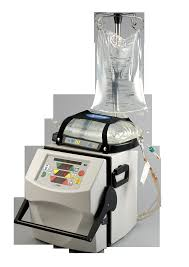NxStage System One -Home Hemodialysis
The NxStage System One is the first and only truly portable hemodialysis system cleared for home use in the United States, including solo hemodialysis during waking hours, and nocturnal hemodialysis, while both the patient and care partner sleep. It was specifically designed for patients to use in their homes, and is small enough to allow patients to travel and bring their treatment supplies with them.

Demonstration Videos
User Manuals & Other Information
he NxStage System One is a hemodialysis system used for home dialysis, and its user manual is a comprehensive guide for setting up, operating, and maintaining the device. The manual covers essential aspects of the system, including dialysate preparation, cartridge insertion, and treatment procedures. It also includes troubleshooting tips, safety guidelines, and information on using the PureFlow SL dialysate preparation system.
-
-
Setting up the equipment:
This includes turning on the cycler, preparing the dialysate, and inserting the cartridge.
-
-
Priming the cartridge:
The manual explains how to prime the cartridge, which involves filling it with dialysate and removing air bubbles.
-
Entering treatment information:
Users learn how to input the necessary information into the cycler, such as the treatment duration and dialysate volume.
-
Connecting the patient lines:
The manual provides instructions on connecting the patient’s blood access lines to the cartridge.
-
Troubleshooting alarms:
The manual offers guidance on troubleshooting common alarms and resolving issues that may arise during treatment.
-
Using the PureFlow SL system:
If the user is using the PureFlow SL dialysate preparation system, the manual will cover how to prepare dialysate, maintain the system, and take samples.
-
Safety precautions:
The manual emphasizes the importance of following safety guidelines to minimize risks during home dialysis.
-
Maintenance:
The manual will include information on routine maintenance tasks to ensure the system is working correctly.
- The NxStage website and Fresenius Medical Care website may offer the manual for download.
- You can also find the manual by searching online for “NxStage System One user manual”.
- If you are unsure where to find the manual, contact NxStage or your dialysis center.
Similar Instructions
